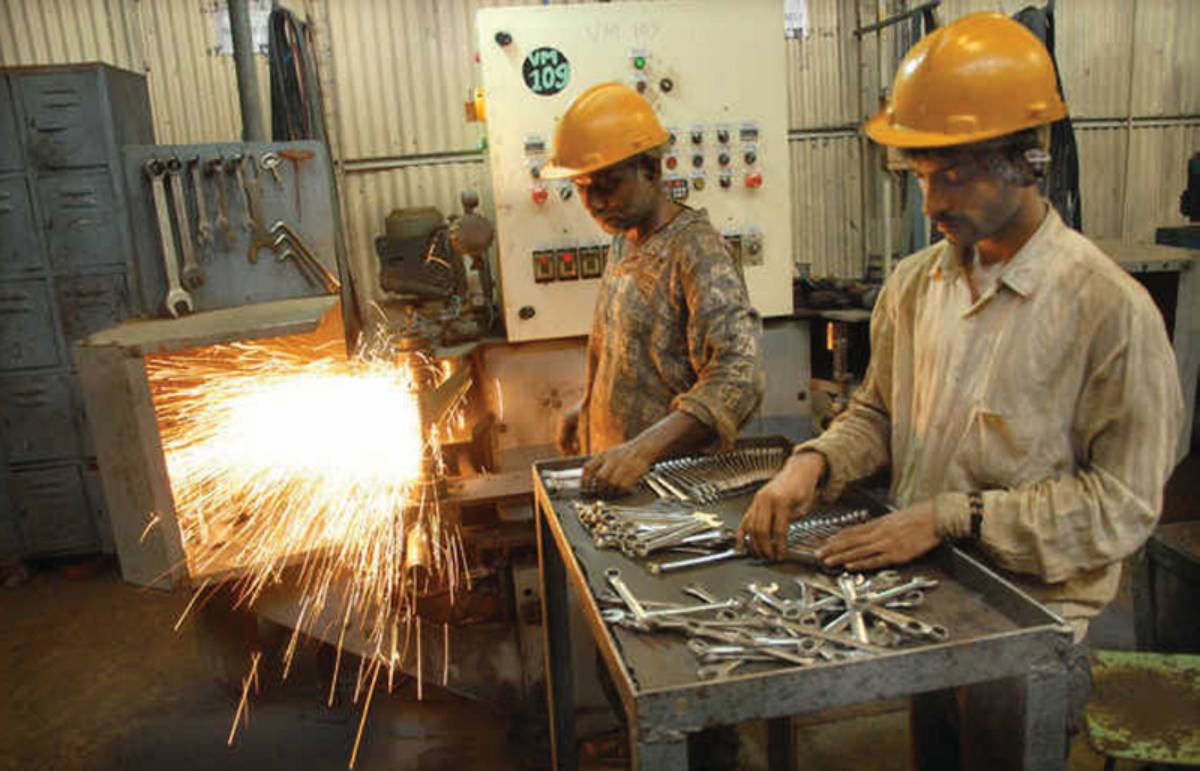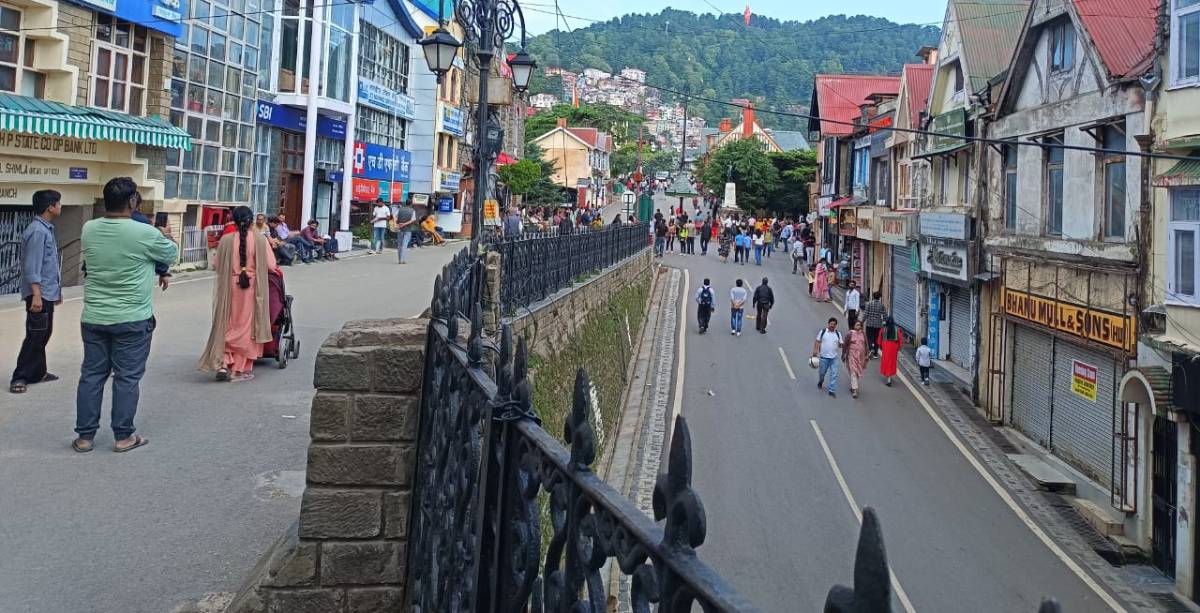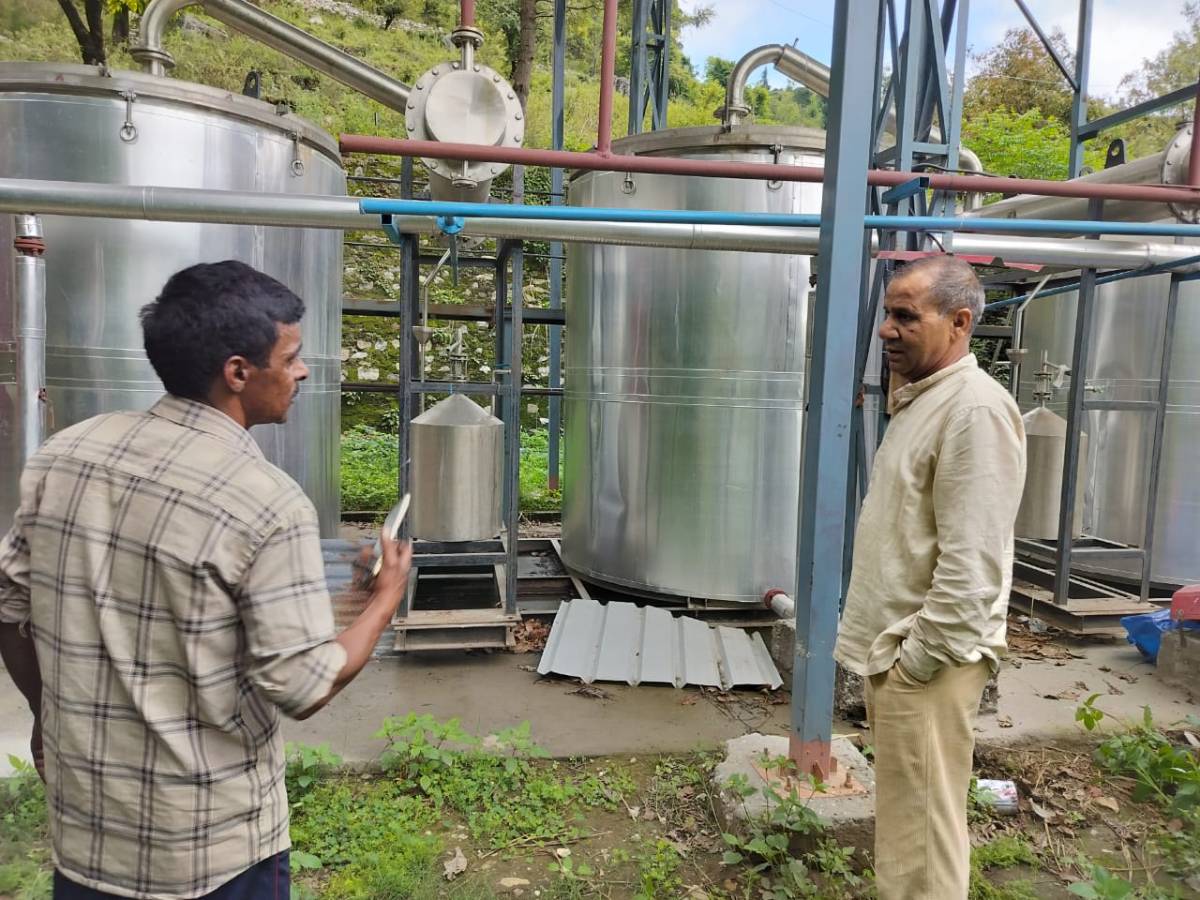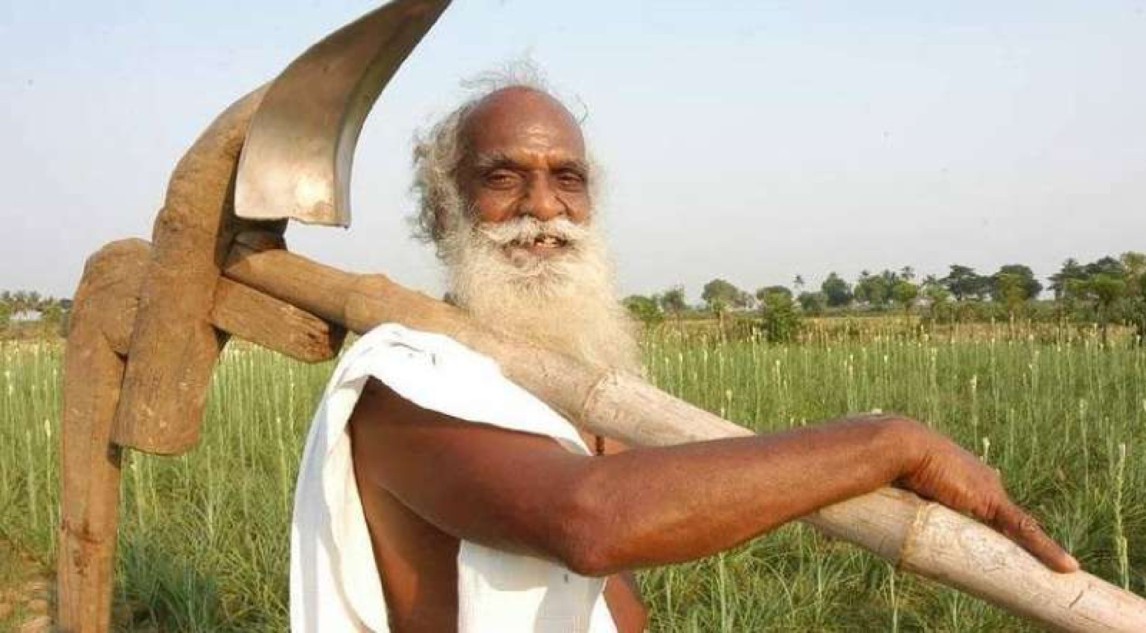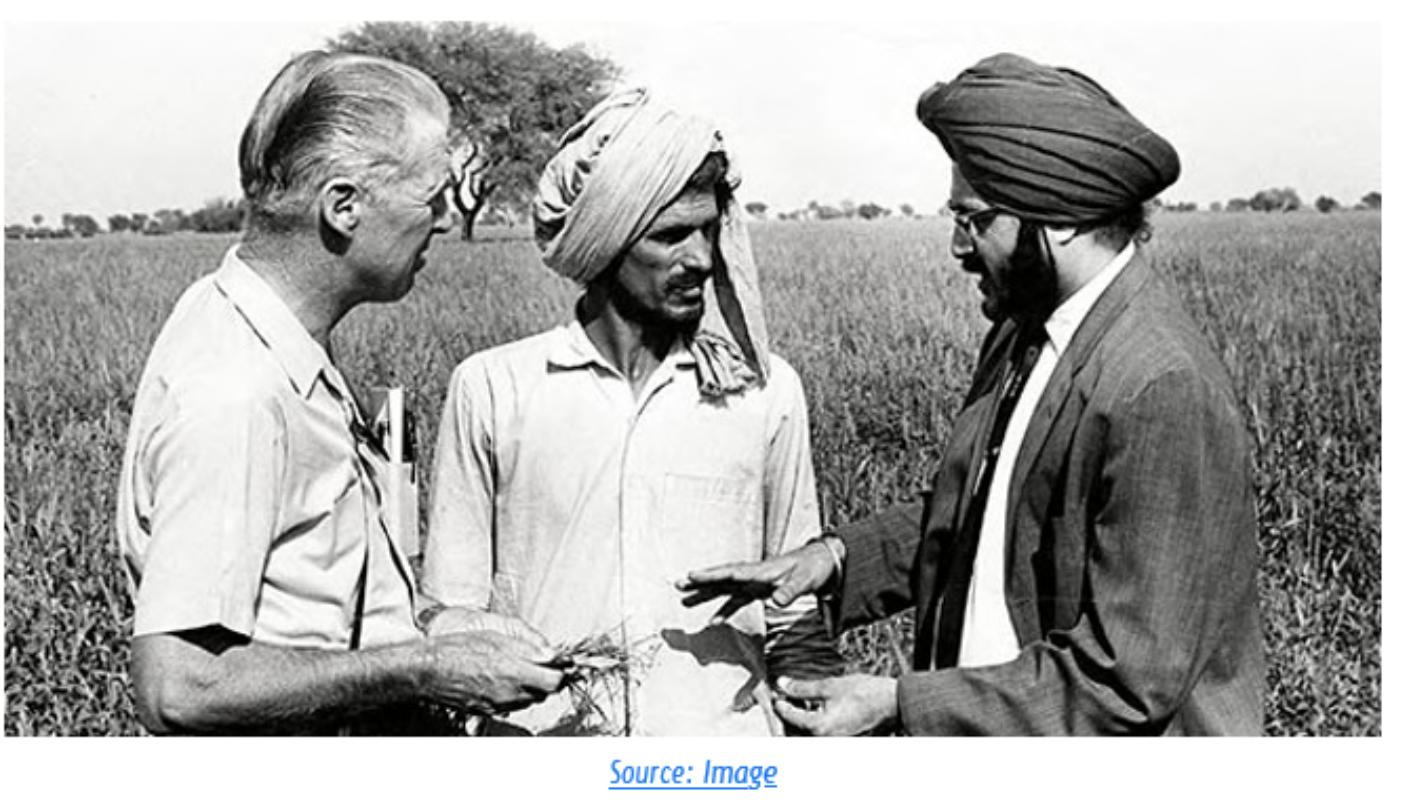Context – The SME sector in Punjab
Significance of the SME Sector
As per a study on prospects of small scale industry in Punjab, (Gupta and Aggarwal, 2016)1 , “In Punjab, small-scale industries was occupying important place, because of their employment potential and contribution to total industrial output. They also helped in the resource utilization and further help to promote changes in a gradual and phased manner. The progressive trend in the industry was badly affected after the state suffered law and order problem due to militancy / terrorism in post 1980-90 period. Due to the disturbances the industry suffered a setback and most of the industrial units either shifted their activity to other states or close down their units. The revival of the industry was not possible till the law and order improved in the state.
Thereafter Government has taken a few steps to promote Small scale industrial production in Punjab by encouraging new units. However, the response to the industrial development was not encouraging since the state was unable to clear the backlog of incentives due to the industrial unit. As per the 1992 policy The Punjab Government introduced a new policy to promote small scale entrepreneurship, Punjab government’s policy for settlement of dues to help SMEs to recover from high cost debt..”
Challenges facing SMEs in Punjab
As per the Economic Census 2013, Punjab was home to 444,659 establishments with at least one hired worker that account for 2.92 % share in country total. Between 2005 and 2013, while both number of establishments and employment increased in the state, urban jobs saw third lowest rate of growth (31%) in the country after Madhya Pradesh (25%) and Odisha (30%). Growth in rural employment was double at 62% in the same period. (5th Economic Census 2005, 6thEconomic Census 2013).
As per a recent study (Bedi, Sampla, Kumari, 2021),2
“During the year 2017-18, there were 1,60,000 small scale industrial units with an investment of Rs 14,460 crore which generated employment to 11,48,100 persons, with a production value of Rs. 86,240 crore. (Statistical Abstract of Punjab, 2018-19). The Jalandhar district has prominent share in Punjab regarding number of small scale units registered, fixed investment and employment generated. Jalandhar contributes 12 percent of total number of small scale units registered in Punjab, comprises 13.5 percent share of employment generated and accounts for 10.4 percent share of total fixed investment by SSIs in Punjab (District Industrial Centre, 2018-19)…
Though the number of working units has come down from 200,603 in 2003-04 to 160,000 in 2017-18, a compounded annual growth rate (CAGR) of -1.5%, “there is a continuous increase in the other figures over the years. Exports have the highest CAGR of 15.5% followed by Production (10.9%), Fixed Investment (8.8%) and Employment (1.7%).”
“A number of studies found that SSIs are frequently faced with constraints and challenges. Sharma(2012), Kumar(2010), Kaliselvan(2009), Velsamy(2012) identified the multifarious problems faced by SSIs which include quality of products, lack of effective executives, technology upgradation, lack of finance, protection of domestic trade from foreign countries, terms of payment, export import procedure and regulation in India, high cost of production and regulation of export market. The above literature revealed the industrial finance to be the most important problem of small scale producers which is further identified as shortage of working capital, inadequate assistance from banks and hostile attitude of government agencies.
Ahluwalia, et al.(2008) proposed industrial strategy that help in creating conditions for growth in the technologically advanced sectors like information technology, biotechnology, pharmaceuticals and health care which could become catalyst of change in the industrial sector of Punjab. The projected industrial strategy for Punjab addresses the numerous challenges of industrial development in the context of the overall economic development in the state. Studies by Ramanaiha (2011), Suresh and Shashidhar (2007), Chakrabarty (2006), Pandey and Shivesh (2007), Dende and Joshua(2012) attempted to analyze the conditions of SSIs, challenges and opportunities in India in the era of liberalisation, privatization and globalization.
This study is based on Action Research conducted in the Jalandhar Handtools SME cluster in Punjab over the last six months of 2021.3
Sector and Cluster Overview4
Hand Tools Sector in India
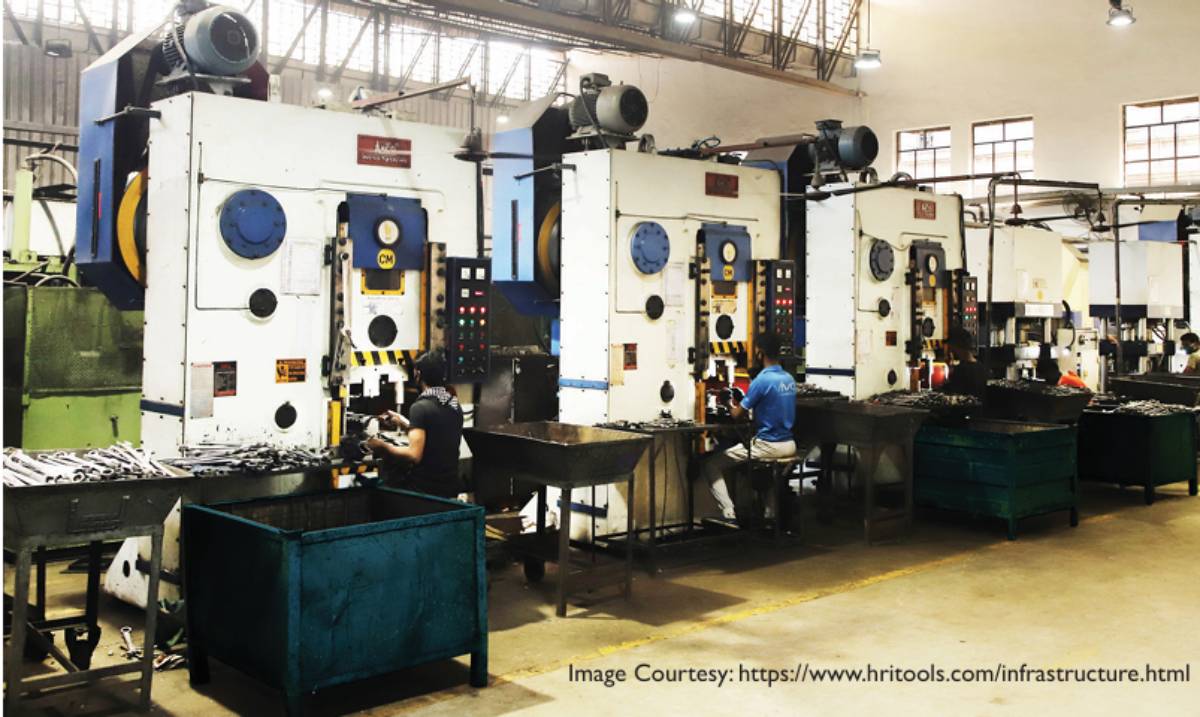
As per Mr Ajay Khashu, Business Development Manager & Advisor, Hazet “In recent years, as economic globalization accelerates, the hand tool industry became the main source in hardware tool manufacturers throughout the world. The wide application and larger demands in hand tools are beyond imagination and as a result of this, there is an increase of more than 10% every year. Hand tools are products with good profits and competition of hand tool products is mainly decided by the quality of raw material which in this case is steel quality, used for manufacturing and steel products are faced with the problems of surface quality and internal cracks which are problems of steel technology that cannot be ignored.
“Hand tools in the world market can be distinctly divided into two types: (a) Developed markets and (b) Developing areas. The point of distinction is that the former are produced not by order, are subscribing to advanced methods of production. The latter are different in these parameters, and so enjoy a little monopoly in the international market.
Hand tools comprise of general-purpose tools (spanners, wrenches, pipe cutters, woodworking tools, pliers) watchmaking tools, goldsmith tools, automotive tools, agriculture tools, industrial tools, garden tools, non-sparking tools and so on. The Indian hand tool market is estimated to cross US$ 200 million which is growing at a rate of 12% annually. India’s advantage is low labor, low cost, and availability of raw materials.
There are more than 8500 SME hand tool manufacturers in India, out of which 3400 are in Punjab and of these, 1200 are in Jalandhar, 800 in Ludhiana, 400 in Patiala and the rest spread over the state5 . They are catering to the demand for local markets and export. As the demand is increasing and customers getting more quality conscious, the technological improvement for manufacturing in India requires sophisticated tools and equipment. Industries like defense, railways, agriculture, automobiles, and aerospace are expecting good quality products for ease of operation due to which small manufacturers have upgraded themselves and are now competing with established organized players but the market is still open for high-quality application hand tools. Good quality hand tools manufacturers are now entering the Indian market because of the growing demand for brands, better quality, zero error, global reputation and recommendations from other industrial sectors from different countries. Some organizations have started e-selling but the proportion of sales is still small.”
Demand Conditions
Domestic Demand
The hand tools market in India is projected to reach a revenue share of Rs 12,000 crore by 2025 due to a steady demand from various industrial sectors. The demand in the domestic market is from construction, automobile, aerospace and DIY sectors for drilling, hammering, sawing, and other tools. Despite the slow replacement of hand tools by power tools in the country due to the rising demand for more precision, efficiency, performance, and to improve the overall ergonomics, hand tools are the more demanded in India. As a result, Indian hand tools market is anticipated to grow at a CAGR of 3.8% during the period of 2020-2026. As per the data received from Ministry of Commerce Export Import Data bank, imports of hand tool products (HSN Code 8205) in 2017-18 were Rs 321 Crore and rose to Rs 388 Crore in 2018-19. 6 Yet, as per a study by Bedi et al (2021), lack of access beyond local markets accounted for 15.8% of the issues of SMEs in Jalandhar.
Export demand
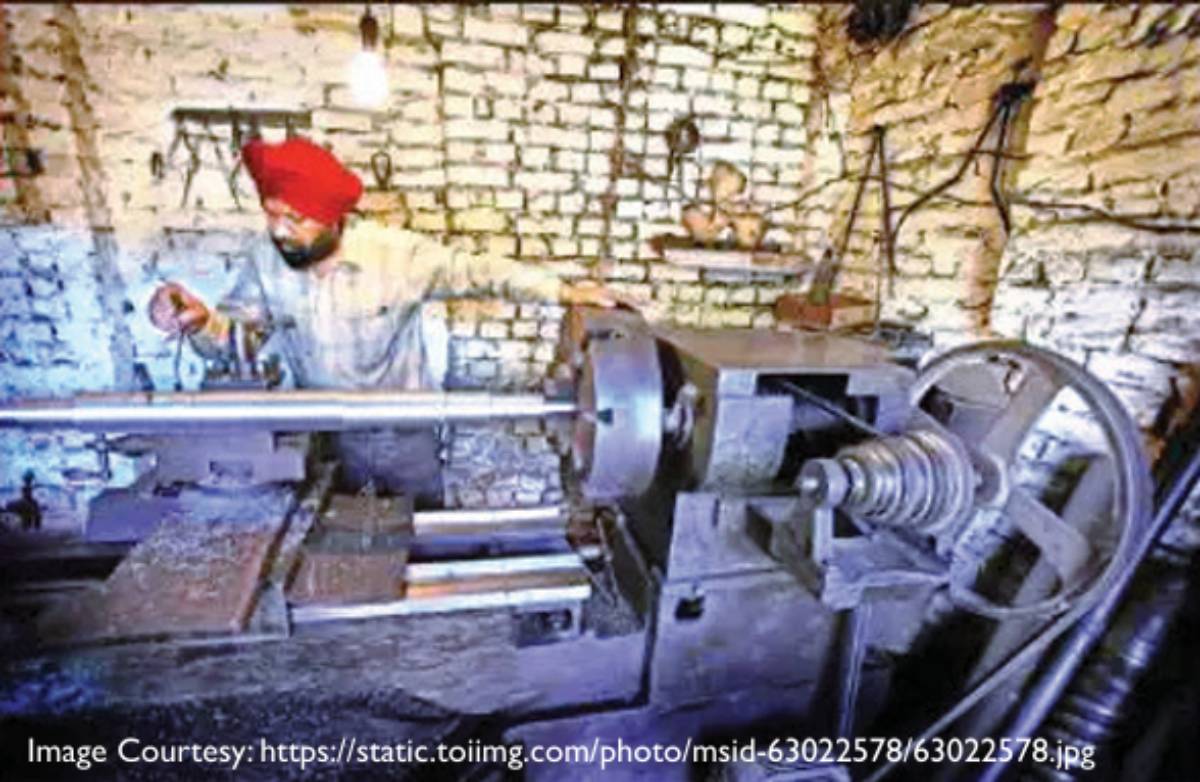
Data available for exports of this product for 2017-18 showed exports worth Rs 747 crore and Rs 835 crore for 2018-19. Top four export HSN codes at 8-digit level having more than 10% share of the total hand tool exports are: Clamps and the like; Hammers and Sledge hammers, Grease Guns and Other Hand Tool Incl. Glaziers Diamonds Vices. Top export destinations of hand tool from India are the United States of America, United Kingdom, France, Germany and the. United Arab Emirates. Sector is also witnessing surge in exports with buyers’ preference shifting from China to India due to currently ongoing pandemic scenario and hence India can capture greater market share in hand tool exports market.7
Firm Strategy, Structure and Rivalry
Paucity of Resources
Indian SMEs remain small due to financial and HR constraints and do not grow in terms of employees or turnover. There seems to be poverty in resources available with most SMEs interacted with, be it financial or human capital, knowledge or even time. Apparently, poorly managed business creates structural inefficiencies causing most time of owner managers in troubleshooting routine operations. There seems to virtually no conduit of useful knowledge for the owners. Interestingly, all SME owners highlighted availability lack of good human resources as one of the most serious challenge they faced. Even among those willing to pay the price often not find suitable candidates as “no one is willing to move to the small town”.
Informality and Lack of Corporate Governance
To begin with there seems to be no formal governance among SMEs in Punjab. The promoters/owners play a dominant role in all aspects of the business, and usually their word is the final. It is observed that this often leads to poor planning management, perhaps because of absence of functional expertise. One of the apparent reasons for this lack of trust in “outsiders” in making decisions, hence the business remains owner-managed with family members in key decision-making positions. There is a clear person dependency in the firms coupled with an apparent inability to create managerial capital within firms.
Firm competitiveness
Units use the following production process to manufacture hand tools. Productivity is very low.
- Raw material cutting using power presses
- Heating in oil fired forging furnace
- Forging using drop hammer and/or Blanking using power press
- Hardening – heating to 835C (oil fired furnace) followed by quenching
- Tempering (electrical operated furnace), Shot blasting and Electroplating (if applicable)
- Packing, inspection & dispatch.”8
A medium scale unit produces around 50-70 tonnes of material per month. The production of the unit depends upon the number of hammers installed in the unit. The production of the clusters is presently affected because of frequent power cuts, ranging from 4-6 hours in a day.
Jalandhar Hand Tools Cluster
Jalandhar, in Punjab is one of the prominent hand tools clusters in the country. The cluster came into existence around the time of Indian independence in 1947, when skilled labourers from Pakistan came and settled there and started manufacturing hand tools. Subsequently, the government of Punjab through Punjab State Industrial Development Corporation (PSIDC) set up an industrial estate on the outskirts of city which is today a hub of hand tools.
A substantial quantity of the hand tools production is exported to countries like USA, UK, Germany, Italy, Australia and Russia. The estimated turnover of the cluster is approximately Rs 1,000 crore (Rs 10 billion) per annum. The cluster employs about 60,000 direct employees.” 9
There are around 1200 units manufacturing hand tools in the cluster. Out of this about 1100 are small scale units and 100 units are in the medium scale. As per industry estimates, the cluster produces about 50,000 ton of hand tools per annum. Most of the units manufacture an array of hand tools like spanners, screw driver, pliers, bench vices, tyre levers, hammers and so on.
Factor Conditions in Jalandhar
Infrastructure
As per a study by Bedi et al (2021), lack of basic facilities accounted for 14% of the issues of SMEs in Jalandhar. This included problems of infrastructure like sheds, transport, water, power and other civic amenities.
Power Quality and Tariffs
As per a study by Bedi et al (2021), power constraints accounted for 21% of the issues of SMEs in Jalandhar. Many labour hours are wasted and unutilised during power cut. Moreover, as power supply is not properly regulated, the fluctuation in voltage affecting production. Many SMEs cannot go for installing alternatives like generators. Punjab has had one of the highest power tariffs in the country for industrial uses.
Capital
Own financing has been major source of equity but how that has tapered off as agricultural surpluses have dwindled and immigration expenses have sucked out surpluses. Loans/credit availability has been inadequate. Kotty (2008) remarked that “the problem of sickness in small scale indusrties is due to under utilisation of capacity [due to] shortage of working capital… Non availability of timely credit is the major cause of small firm’s sickness. Grants /Subsidy – have dwindled over the years.
As per a study by Bedi et al (2021), financial constraints accounted for 12.8% of the issues of SMEs in Jalandhar. They said that documentation is too much while dealing with banks and after that the amount granted by bank relative to the amount requested is less. Non availability of loan from bank leads SSIs to take loan from other sources and private moneylenders demand high rate of interest.
Case Study -1: Oaykay Tools
We met Mr Sharad Aggarwal, Promoter, Oaykay tools is among the top 5 hand tools manufacturers in Jalandhar. He shared the history of handtools in Punjab.
- Drop forging tech introduced in Delhi region by German support in 1970s. Post WW2 to 1960s – Germany, Japan major hubs. 70’s – Taiwan, China, India
- Central hand tools institute established in Jalandhar by GoI in 1980s to train workers and provide assistance to manufacturers.
- Drop forging tech arrives in Jalandhar in early 1990s. Throughout 1980s and 90s, Taiwan invests in China handtools manufacturing – knowledge/ tech transfer
- 2000s Hand tools majors in Delhi NCR close shop and business moved to Jalandhar and Ludhiana – cheap labour and govt policies helped
- Late 2000s serious challenges for hand tools manufacturers in Punjab due to stiff competition from China
- 2010s – low growth/ survival period for handtools in India – no innovation, no value addition. Meanwhile China uses special purpose machines or SPMs based autonomation to produce better quality at lower costs.
- Last 15 years – 50% of Jalandhar cluster has shut business
Challenges faced by him are:
- Low capital infusion, small scale and no new knowledge/ technology
- Labour intensive – natural size ceiling, low entry barrier
- Raw material availability, price and quality in India
- Transportation to ports from Punjab – very high – impacts margins
- Credit repayment terms not favourable
Way forward
- Identify cluster with at least 500 players
- Perform gap analysis to identify products, markets
- Identify first movers – incentivise production
- Invest on SPMs to achieve competitive scale
Engagement – He was willing to engage at a cluster level intervention but cites failed previous attempts by GoI and UNIDO and ‘small town mentality’ as a great challenge.
Case Study 2 – Surindra Tools & Forgings
We met Mr Pritpal Singh Setia, Promoter, Surindra Tools and Forgings. It is a tools manufacturing small business (<20cr turnover), which largely manufactures hand tools for domestic brandslike Taparia. They use old and pre-owned machinery, low number of manual workers andwork double shifts. Surindra tools is managed by Mr Setia and there is no other manager
between him and manual workers, other than his spouse who helps manage accounts. Mr Setia has very little long term/ strategic or ecosystem level orientation. He is open to anyprogram or new approach designed to help businesses like his. Challenges faced by him were:
- Increase in price of raw material is impacting their already squeezed bottom line, given the nature of industry that is volume based.
- Delayed payments are one of the biggest challenges that impact their working capital and forces them to utilise their limit completely.
- Access to credit for long term investments is difficult to obtain in the given market circumstances
- Bureaucratic harassment for various departments/ rent seeking
- Absence of mentors/ guidance in the environment. Often expect government to ease above challenges
Ecosystem of Support Institutions
Policy Making and Regulatory Institutions
At the national level, the Ministry of Micro, Small and Medium Enterprises (MSME), performs the function of policy advocacy on behalf of the MSEs with other Ministries/Departments of the Central Government and the States and Union Territories. The Ministry also designs
policies, programmes, projects and schemes in consultation with its organisations and various stakeholders and monitors their implementation with a view to assisting the promotion and growth of micro and small enterprises (MSEs). Implementation of the policies and programmes is undertaken through the Office of the Development Commissioner (MSME), the Small Industries Development Organisation (SIDO) and the National Small Industries Corporation (NSIC) Ltd., a public sector undertaking of the Ministry.
At the state level, in Punjab the State Government’s Department of Industries and Commerce is the policy making and regulatory body, also doubling up as a promotional vehicle. The previous government issued the Industrial and Business Development Policy 2017 which
stated that “In order to streamline all the activities pertaining to Industrial Infrastructure development, maintenance and management, Punjab Small Industries and Export Corporation (PSIEC) needs to be strengthened and the State would set up Punjab Industrial and Business Development Authority (PIBDA), a statutory body to spearhead industrial development including industrial infrastructure in the State. All Industrial estates, industrial parks, industrial focal points, industrial growth centres etc. (to be referred as Industrial Parks hereafter) developed by the Directorate of Industries (Punjab), Punjab Small Industries & Export Corporation (PSIEC), Punjab Infotech (PICTC) and Punjab Agro Industries Corporation and other such agencies shall be transferred to the Authority for development, management and maintenance. “
The government asserted that “The Policy marks a decisive shift from department centric approach to a business centric approach. The State will realign and restructure various Government institutions in line with the framework of the policy. Building on the success of
Invest Punjab, a unified regulator providing services of 21 departments and agencies under one office, the policy envisages to cover all the services throughout the business lifecycle to the existing as well as new investors through one stop digital platform namely Invest Punjab – BusinessFirst….The State would set up District Bureau of Enterprise to provide a wide range of services to the industry. The State would reengineer the processes of seven core departments connected with Industrial development to make them extremely simple and
easy to follow.”10
The SME entrepreneurs we met, however, did not show much enthusiasm for the policy or programmes of the government as announced above.
Promotional Institutions
There are various types of promotional agencies that SMEs need – technical, marketing and so on. We found a number of such institutions in existence in the Jalandhar Hand Tools cluster.
Promotional Institutions – Technical
Case Study -3: Central Institute of Hand Tools (CIHT) in Jalandhar established 1983
The Central Institute of Hand Tools (CIHT) was set up by Government of India with assistance of UNDP and Government of Punjab in Jalandhar in 1983, with a view to provide trained manpower and technology support services to engineering industry in general & the hand
tools industries in particular. The institute offers wide variety of services to the industry in the area of design and manufacture of various tools and improvement of the manufacturing processes.
The institute is equipped with CNC machines, heat treatment shop and forging shop11 . CIHT is ISO-9001:2008, ISO-14001:2004 certified and having NABL accredited Lab. CIHT is imparting Engineering Education in the field of Product Design & Development, CAD/CAM,
CNC Programming & Machining, Mechatronics/ Automation with PLC, Welding, Electrician and Quality Control etc. It is providing services to the Engineering industries in various areas such as Tool Room, Heat Treatment, Testing & Quality Control. CIHT is running two long
term courses namely a four year diploma in Mechanical Engineering – Tool & Die and three year diploma in Computer Science & Engineering and Various NSQF compliant courses. It also organizes various short term tailor made skill enhancement courses, entrepreneurship programmes, etc. The management of the institute rests with the Governing Council appointed by the Govt. of India. The Principal Director is the Chief Executive Officer of the Institute. Other members include the Govt. officials and the industrialists from the industry.”12
Though it was fine and foresighted for the GoI to establish the Central Institute of Hand Tools (CIHT) as a promotional technical support institution way back in 1983, what the cluster now needs is an industry association run technology upgradation institution. The prototype
for this is the Department of Science and Technology (DST) facility, Sophisticated Analytical & Technical Help Institute (SATHI)13 , which is accessible to start-ups, SMEs, R&D Labs, etc. These facilities are equipped with major analytical instruments and advanced manufacturing
facility. The aim is to provide professionally managed services with efficiency, accessibility and transparency under one roof to service the demands of industry, start-ups and academia.
Promotional Institutions – Technical
Case Study 4 – Bureau of Energy Efficiency project in Hand Tools cluster in Jalandhar
An example of how to improve technology can be seen from the work done on energy efficiency in the hand tools cluster in Jalandhar. “Energy accounts for nearly 20% of the total cost of production. Electricity and oil (mainly furnace oil and light diesel oil or LDO) are the
main forms of energy used in the cluster.
Electric energy is used to operate electric motors, pumps, air compressors, blowers, hammers, broaching machine, shot blasting machine and in the tempering furnace. Oil is used in the forging furnaces and hardening furnaces. The annual energy consumption of the cluster is
19,829 toe per year.”14
The Bureau of Energy Efficiency has established a project for promoting energy efficiency and renewable energy in the hand tools cluster in Jalandhar and It has developed a set of common monitorable parameters for energy efficiency.15 It led to the following outcomes:
- Energy-savings in selected units: up to 25%;
- Some medium-sized units have installed new CNC technology for dye-making as demonstrated by the hand tool institute;
- Productivity / Quality Control: Most units have introduced improved house-keeping measures; o Market awareness created during trade fair visits, but little response with regard to sales deals (MoUs);
- Unacceptable lack of occupational health and safety measures in both CIHT and hand tool units were identified for action.
- Increase in competitiveness is reported.16
Promotional Institutions – Raw Material Sourcing
Various types of steels used for manufacturing of tools including Carbon Steel Chromium vanadium steel (Cr-V): and Chrome molybdenum steel (Cr-Mo) steel are needed by the hand tool units. SMEs expressed the need for setting up a raw material bank where a government
agency may purchase the raw material directly from the large manufacturers and store the material in storage yards/ raw material depots. Such an entity does not exist yet and there is no reason why it should be set up by the government – this can be an industry initiative.
Promotional Institutions – Marketing
Case Study -5: Engineering Exports Promotion Council (EEPC), Jalandhar Office
EEPC is a national organisation under Ministry of Commerce and Industry, GoI, setup in 1955 with a stated objective of promoting exports of engineering products from India. Met Mr Pranab Kumar Singh, Asst. Director. The role of the Jalandhar Office is guiding manufacturing businesses through export process – information, documentation, etc. They also organise awareness events for exporters or prospective exporters about potential markets, manufacturing practices and evolving foreign clients’ requirements. They encourage participation of members in international trade shows/ expos, etc. by financing travel and participation costs.
Capital Providing Institutions
SMEs need access to three types of capital – equity or risk capital, debt or loans, and grants or subsidies. The situation with respect to each is given below.
Equity: Own funds remain sole source of equity for SMEs. Very little access to the equity markets.
Debt/Loans: After the decline of National Small Industries Corporation (NSIC) and the demise of Punjab State Finance Corporation, the role of Informal Capital has gone up. SMEs face difficulty in financing by Banks, despite CGTSME guarantees and though there over
30 banks with branches in Jalandhar which lend to SMEs and are listed on the portal of https://jalandhar.nic.in/public-utility-category/banks/ . In addition there are a number of national level non-bank finance companies (NBFCs) and many local small NBFCs in Jalandhar.
Case Study -6: Capital Small Finance Bank (CSFB), HQ Jalandhar
Jalandhar is also the headquarters of the Capital Small Finance Bank (CSFB), which has loans outstanding to SMEs of over Rs 900 crore. https://www.capitalbank.co.in/. It says
“SME constitutes an important sector of the economy and trader is a key component of supply/distribution system. CSFB extends credit to the traders, manufacturers and service enterprises on attractive terms to meet their requirements for financing of stocks / book debts and creation of assets required for smooth running / expansion of their business. Its specified margin (equity) requirement is 25% and it lends against a charge on stock. Debtors with adequate Collateral Security are eligible. It seeks third party guarantee of substantial means.
Grants/Subsidies: There are various schemes for subsidies. This included the GoI’s Credit Linked Capital Subsidy Scheme (CLCSS) for Technology Upgradation of Small Scale Industries (SSI), from 2006. This requires the SME getting a bank loan. At the local level, SMEs told us that Punjab Invest is more focused on attracting large industries and most of the subsidies are going there.
Representational Institutions
There are a number of industry associations in the cluster, listed below:17
• Hand Tools Manufacturers Association
• Jalandhar Hand Tools Manufacturers Association & Steel Fabricators Association
• Jalandhar Forgings & Engineering Association
• Federation of Jalandhar Engineering Association
These associations are mainly engaged in representing common grievances such as shortage of power, raw materials, and infrastructure deficiencies, and lobbying for more subsidies and seeking favourable treatment from banks. They also undertake common promotional
activities such as participation in trade fairs, organising training programmes and so on.
Case Study -5: Jalandhar Generation Next (JGX) – Association of Young Entrepreneurs
A recently established association of entrepreneurs and second or third generation industrialists with average age under 30 years, mostly from Jalandhar. JGX has close to 20 members from diverse businesses – food, manufacturing, services incl. hospitals. We met Mr Abhinav Rastogi, Chairperson. He explained the objectives (i) supporting learning of members and peers through purposeful engagements and (ii) leadership development of members to enable better management of respective businesses. The modus operandi of the association was monthly events with focus on either Business, Personal or Social aspects. It also offers one on one discussions on specific professional/ personal needs. The association is new and is building an understanding of what they wish to achieve collectively. They offer good testing
ground for initiatives as members open to new ideas and experimentation.
Conclusion
The hand tools cluster of Jalandhar needs to move out of its current low margin- low sustainability equilibrium. To make it a dynamic cluster capable of catering to sophisticated domestic demand (which is currently being met by imports) as well as to export, a holistic eco
system approach has to be taken. Such an approach must upgrade market intelligence, product design, process and manufacturing technology, enterprise management, finance, packaging and marketing. A lot of these will have to be availed of as shared services as individual SMEs will not be able to afford this range of services internally. Further, these services should be offered by fee-based private service providers and not salary-based government employees. It is critical that industry associations play this role and equally critical that government agencies step aside. The question of finance is not easy, but capital finds its way to dynamic sectors and clusters.
Footnotes:
1 Gupta, Monica and Kavita Aggarwal (2016). Prospects of Small Scale Industry in Punjab. International Journal of Management (IJM) Volume 7, Issue 7, November–
December 2016, pp.226–231, accessible at https://iaeme.com/MasterAdmin/Journal_uploads/IJM/VOLUME_7_ISSUE_7/IJM_07_07_023.pdf
2 Bedi, Ubique, Rupinder Sampla, Lalita Kumari (2021). Constraints and Prospects of Small Scale Industries in Punjab Journal of Science, Technology and Development
Volume X Issue II February 2021 ISSN : 0950-0707 http://journalstd.com/gallery/76-feb2021.pdf
3 Bedi et al 2021 p. 5
4 https://www.maiervidorno.com/hand-tools-in-india-a-synopsis/
5 http://dcmsme.gov.in/40_Hand%20Tools%20Mech%20by%20Vinay%20Adlakha.pdf
6 http://dcmsme.gov.in/40_Hand%20Tools%20Mech%20by%20Vinay%20Adlakha.pdf
7 http://dcmsme.gov.in/40_Hand%20Tools%20Mech%20by%20Vinay%20Adlakha.pdf
8 http://sameeeksha.org/pdf/clusterprofile/JalandharHandToolsClusterBrief.pdf
9 http://sameeeksha.org/pdf/clusterprofile/JalandharHandToolsClusterBrief.pdf
10 https://pbindustries.gov.in/static/assets/docs/Industrial_Policy_2017.pdf
11 http://sameeeksha.org/pdf/clusterprofile/JalandharHandToolsClusterBrief.pdf
12 http://www.ciht.in/profile.html
13 https://dst.gov.in/sophisticated-analytical-technical-help-institutes-sathi
14 http://sameeeksha.org/pdf/clusterprofile/JalandharHandToolsClusterBrief.pdf
15 https://beeindia.gov.in/sites/default/files/Jalandhar.pdf
16 https://www.unido.org/sites/default/files/2007-11/66682_200705_CSF_India_final_report_no_cover_0.pdf
17 http://sameeeksha.org/pdf/clusterprofile/JalandharHandToolsClusterBrief.pdf

